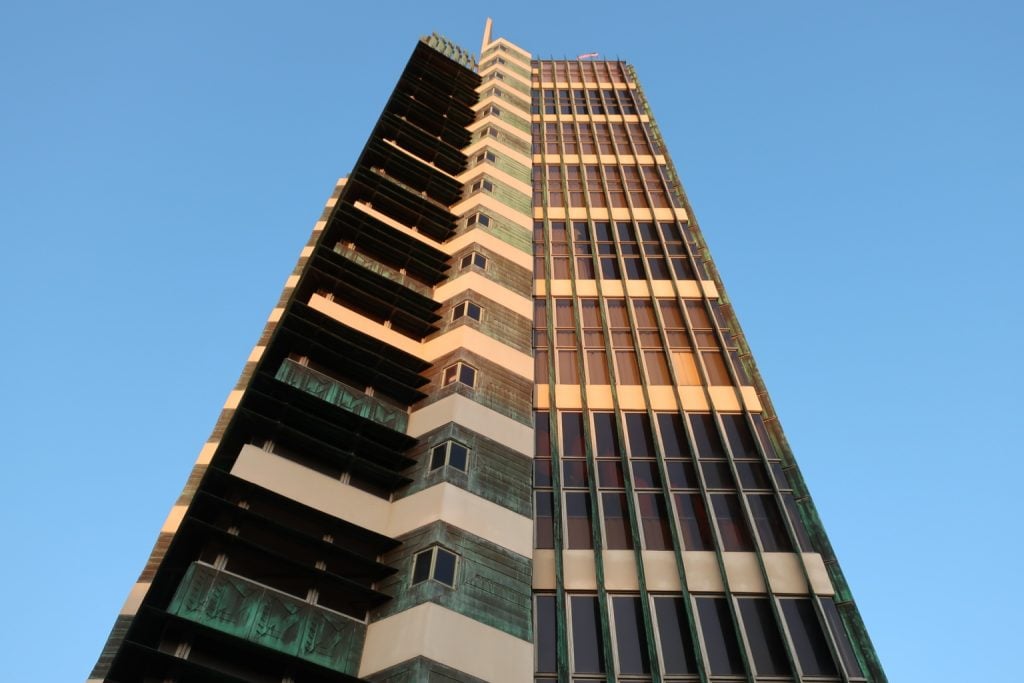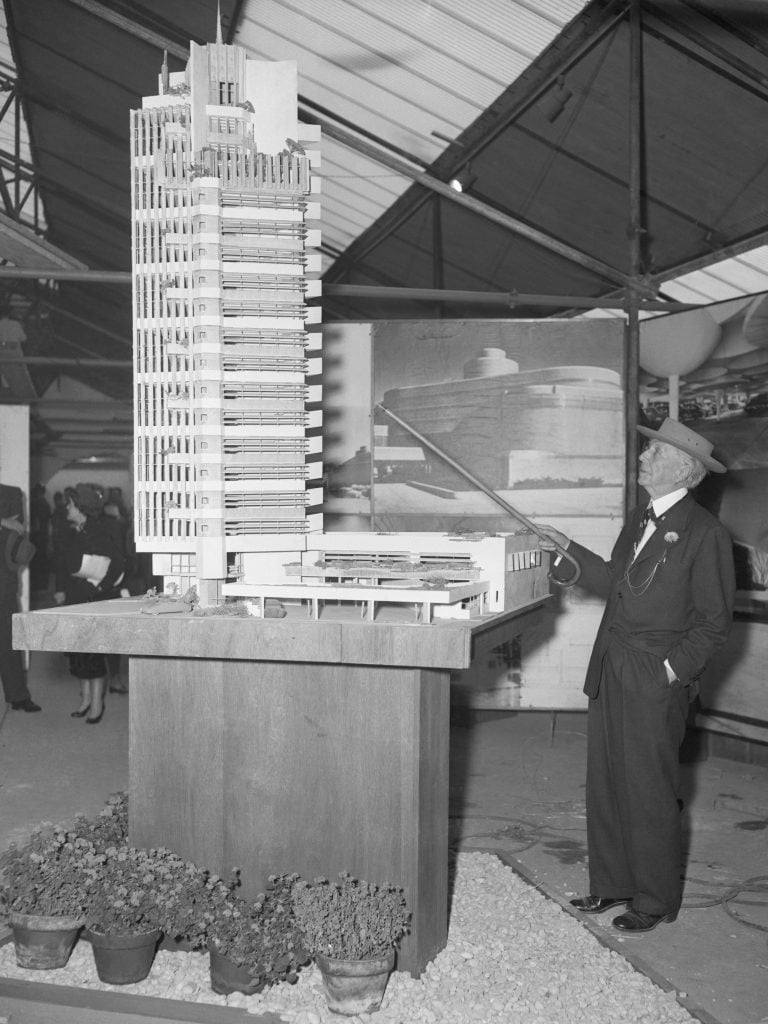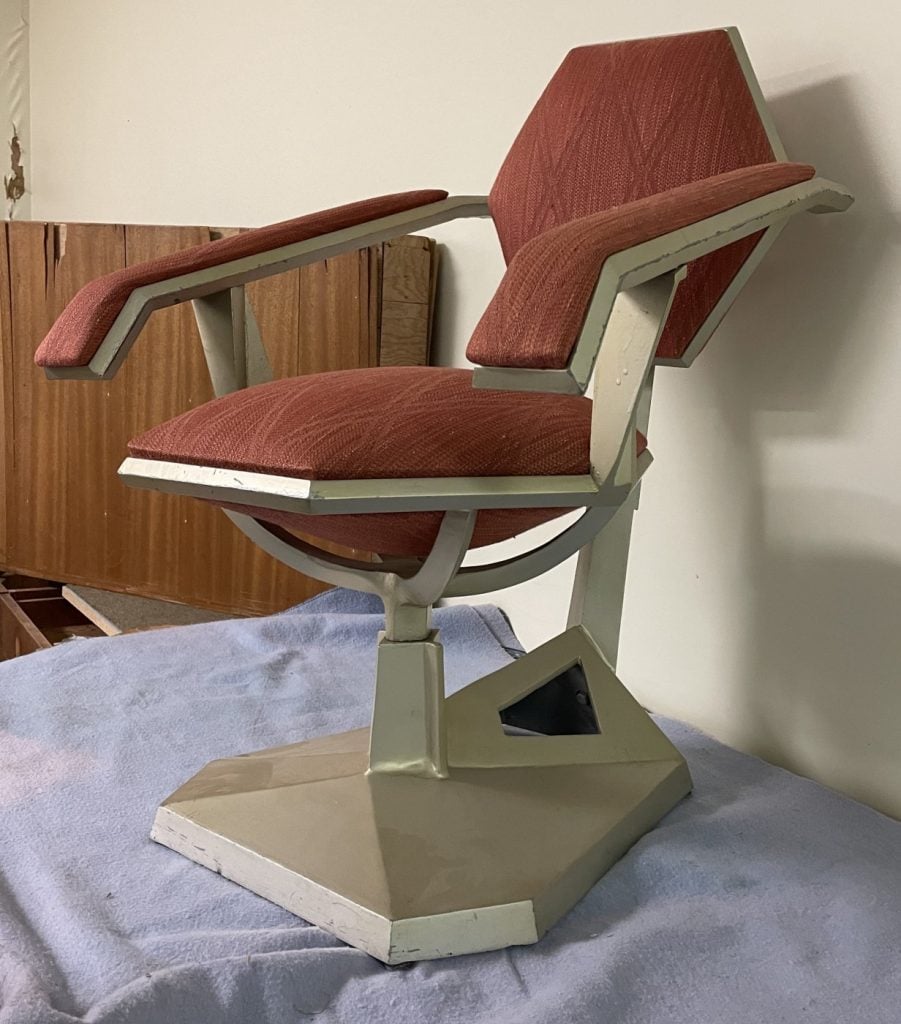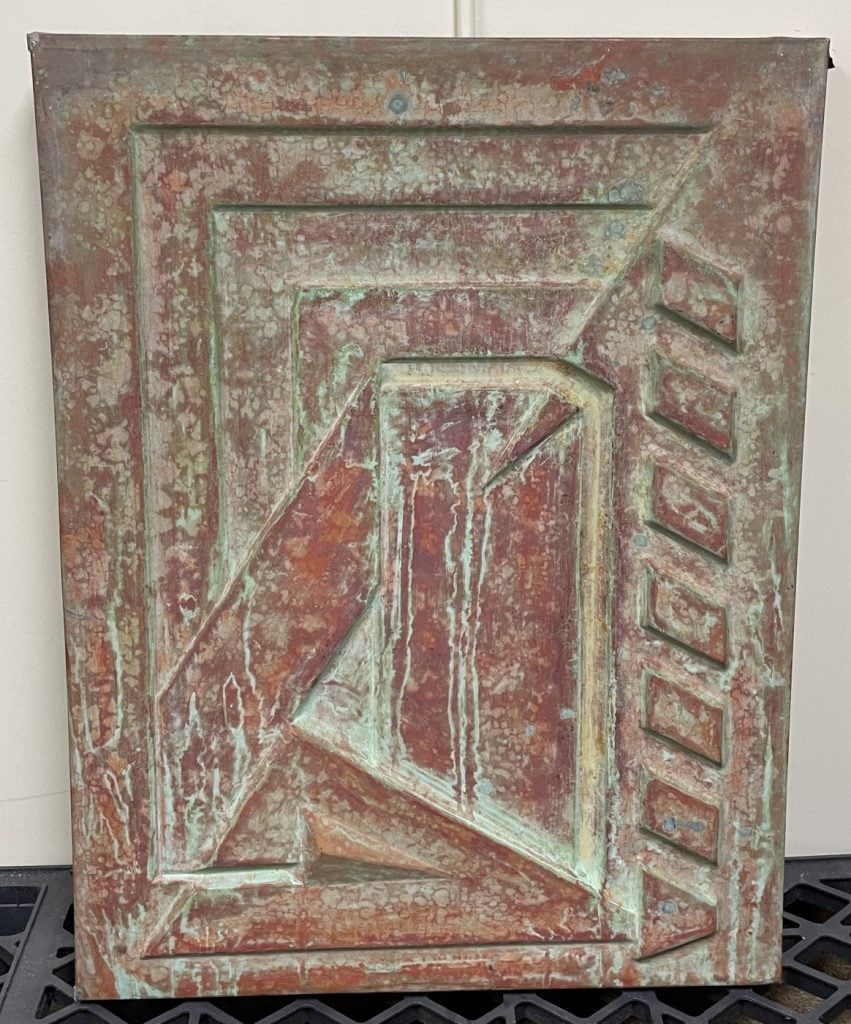Art World
Frank Lloyd Wright’s Only Skyscraper Set to Close Amid Controversy
The building's owners have also been selling off furnishings designed by the architect.

The building's owners have also been selling off furnishings designed by the architect.

Richard Whiddington

When a local investment company swooped in to purchase Price Tower in March 2023, a bold vision was offered for the skyscraper Frank Lloyd Wright built in Bartlesville, Oklahoma.
Copper Tree Group proclaimed it was “Safeguarding an Icon” with modernization plans including high-end restaurants and a boutique hotel. In an interview, its CEO, Cynthia Blanchard, went further, putting Wright’s 1956 tower at the center of a regeneration project to turn Bartlesville into what she termed “Silicon Ranch,” a tech hub in the Ozark foothills.
Less than 18 months on, Price Tower is set to close under a cloud of scandal, ongoing legal battles, and chronic financial mismanagement.
Its tenants, including a hotel, rooftop bar, restaurant, arts organizations, and a local magazine, have been given until the end of August to relocate. The future of Price Tower, the 19-story concrete and copper structure that endures as Wright’s tallest building, remains entirely uncertain. The Blanchards are rumored to be trying to sell the building.

Frank Lloyd Wright with a model of the Price Tower in Oklahoma, 1953. Photo: Bettmann / Getty Images.
After buying the Tower from a local nonprofit for a nominal fee of $10 last year, Anthem and Cynthia Blanchard, Copper Tree Group’s founders, pledged to pay down the property’s $600,000 debt and invest $10 million into the property as part of its “commitment to responsible stewardship.”
Neither investment has taken place. Instead, in court documents filed in April of this year, the Blanchards declared that HeraSoft, the blockchain solutions company whose employees were part of the team that took ownership of Price Tower, was financially insolvent and unable to pay employees.
Shortly thereafter, three HeraSoft employees came forward claiming they had been pressured into swapping the money owed to them by HeraSoft into equity in Price Tower. The trio alleged the Blanchards had promised to quickly “flip” the asset and documents obtained by the Bartlesville Examiner-Enterprise showed the three were owed $200,000.
Next, the owners of Price Tower began selling off the building’s furnishings to 20C Design, a mid-century design dealer in Dallas, Texas. This is prohibited under the terms of the Frank Lloyd Wright Building Conservancy’s preservation easement on Price Tower, which prevents the sale of heritage items without the Conservancy’s permission.
Price Tower’s representatives did not respond to requests for comment.
Specifically designed by Wright for the Price Tower, the items sold by Price Tower’s owners so far include a unique rolling directory board, architectural copper relief panels, an armchair, and copper tables and stools.

Armchair designed by Frank Lloyd Wright for the Price Tower. Photo: courtesy John H. Waters, AIA.
When the Chicago-based Conservancy contacted the seller, it was informed that the easement was invalid given the property was no longer owned by the non-profit Price Tower Arts Center. The Conservancy duly filed Uniform Commercial Code (UCC) statements against Green Copper Holdings, Copper Tree Inc, and Cynthia Blanchard on August 8, publicly reinforcing that sales of any kind are prohibited.

Patented copper panel from Price Tower sold. Photo: courtesy John H. Waters, AIA.
Aside from fears over future sales, the Conservancy is also concerned about the soon-to-be vacant building’s preservation. “Whenever a building is unoccupied, regular preservation activities are likely to be curtailed,” John Waters, the Conservancy’s Preservation Programs Director, said over email. “An unoccupied building is also more prone to risk due to undetected infrastructure problems and increased security issues. Collection items are likely subject to similar issues when not being regularly maintained.”
The Conservancy is in the midst of examining its legal options with Price Tower’s debt estimated to be close to $2 million. The building was last renovated in 2003 and designated a National Historic Landmark in 2007.